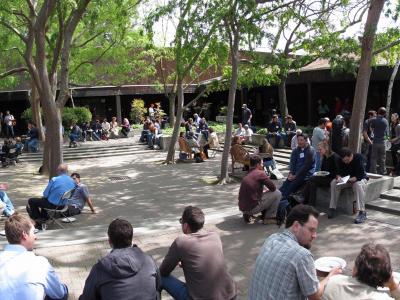Central Valley Recovery Planning and Restoration
Session Coordinator:
Charlotte Ambrose, NOAA Fisheries
In the summer of 2014 a federal recovery plan was released for Central Valley salmon and steelhead that laid a framework to restore the region’s historically abundant wild fish runs. This recovery plan complemented the California Department of Fish and Wildlife’s Ecosystem Restoration Conservation strategy. Millions of wild salmon and steelhead once returned each year to spawn in the foothill and mountain streams surrounding California’s Central Valley. Fed by rainfall, snowmelt, and coldwater springs, these streams fostered diverse and abundant Chinook salmon and steelhead runs. The mid-1800s ushered in sweeping changes to the landscape that led many species to the brink of extinction, including: Sacramento River winter-run Chinook salmon, Central Valley spring-run Chinook salmon, and Central Valley steelhead. Gold mining, dam construction, water and hydropower development, and other land uses hindered fish populations from thriving in the Central Valley. By 1989, Sacramento River winter-run Chinook was listed under the Endangered Species Act as a threatened species, but was soon reclassified as endangered in 1994. Central Valley steelhead and spring-run Chinook followed suit in 1998 and 1999, respectively, becoming federally listed as threatened species.
Today, there is a path to recovery. A concerted effort among NOAA Fisheries, California Department of Fish and Wildlife, the U.S. Fish and Wildlife Service, additional agencies, and the public culminated in NOAA Fisheries’ development and release of a federal plan to recover Central Valley’s listed salmon and steelhead runs. The plan provides a road map to recover these species with the goal of removing them from the Endangered Species List. With science at its foundation, the plan identifies clear priorities to guide recovery efforts in the Sacramento-San Joaquin Delta and its watersheds. It also provides a framework for targeting conservation efforts and modifying on-the-ground actions based on new science and changing circumstances.
The Salmonid Restoration Federation Conference highlights key themes that are critical for the recovery of these Central Valley salmonids: reintroductions, hatchery reform, habitat and floodplain restoration, science and monitoring and others. This session will provide the background of the recovery plans and the context of how specific recovery actions are necessary in specific locations to shift Central Valley salmon and steelhead from extinction to recovery. Persons with an all-encompassing view of recovery for Central Valley salmonids with examples of how specific efforts advance those broader recovery goals are encouraged to submit abstracts.
Recovering Central Valley Chinook Salmon and Steelhead
Brian Ellrott, NMFS
Salmon Recovery NGO Experience
John McManus, Golden Gate Salmon Association
Accelerating Salmonid Recovery: Expediting Permitting of Habitat Restoration in the Central Valley
Eric Ginney, Environmental Science Associates, Ruth Goodfield, NOAA Restoration Center, and Erika Lovejoy, Sustainable Conservation
Funding Opportunities for Fisheries and Watershed Restoration Projects
Matt Wells, California Department of Fish and Wildlife
Conservation Banking 101
Hal Holland and Greg DeYoung, Westervelt Ecological Services
Salmonid Conservation Banking: Two Central Valley Case Studies
Gregg Sutter and Mark Young, Westervelt Ecological Services

